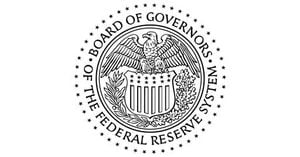Canadian Solar, a global leader in solar module manufacturing and project development, faced a turbulent second quarter in 2025, marked by missed earnings targets, shifting policy headwinds, and a rapidly evolving market landscape. On August 21, the company reported revenue of $1.7 billion, falling short of analyst expectations that hovered near $1.95 billion, and posted a loss of $0.53 per share—well below the forecasted profit of $1.48 per share, according to InvestingPro and multiple financial outlets.
This disappointing financial performance sent shockwaves through the market. Shares of Canadian Solar plunged by over 15% in pre-market trading following the announcement, and by the afternoon, the drop had deepened to 18%, as reported by The Motley Fool. Investors were taken aback not only by the earnings miss but also by a gloomy outlook for the upcoming quarters, with management projecting continued negative EPS and third-quarter revenue guidance set between $1.3 and $1.5 billion—down from the $1.7 billion reported in Q2.
Yet, the quarter wasn’t without its silver linings. Canadian Solar set a new record for solar module shipments, delivering 7.9 gigawatts—up 14% from the previous quarter and near the upper end of company goals. Energy storage shipments, however, reached just 2.2 gigawatt hours, falling short of expectations due to tariff impacts and delivery timing, as detailed in the company’s earnings call and summarized by Earnings Decrypt. Gross margin was a bright spot, climbing to 29.8% and exceeding internal guidance, buoyed by a strong mix of North American module sales and robust storage performance.
CEO Dr. Sean Hsu attributed the margin boost to both a surge in North American demand and notable contributions from the company’s Texas module factory, which has been ramping up production. "Gross margin exceeded guidance at 29.8%, driven by a higher mix of North America module shipments with notable contributions from our Texas module factory, which has made strong progress in ramping up. Robust storage performance further supported margins," Hsu told investors during the Q2 conference call.
However, profitability was hampered by nonrecurring operating expenses, including the impairment of legacy manufacturing assets and accounting adjustments tied to U.S. tax equity arrangements. The company reported net income attributable to shareholders of $7 million, but after accounting for preferred shareholder impacts, the net result was a loss of $0.08 per diluted share.
Canadian Solar’s management pointed to delayed project sales and the timing of storage deliveries as primary reasons for the revenue shortfall—factors expected to recover in the second half of 2025. Despite these challenges, the company maintained full-year revenue guidance of $5.6 to $6.3 billion and a shipment volume target of up to 27 gigawatts, signaling confidence in a rebound as delayed sales are realized.
Yet, the path forward is anything but straightforward. The solar industry is grappling with a new regulatory environment shaped by the recently passed One Big Beautiful Bill Act (OBBBA), which has introduced stricter Foreign Entity of Concern (FEOC) requirements and higher import duties. According to Dr. Hsu, "The One Big Beautiful Bills Act has swiping implications for both supply and demand in the U.S. On the supply side, solar and storage domestic onshoring is challenged by increasingly stringent FEOC requirements and higher import due dates on both equipment and components." Industry analysts estimate that up to 23 gigawatts of operating solar module capacity could be affected, with additional moderation in cell capacity expected due to the complexity and capital intensity of manufacturing.
During the earnings call, Dr. Hsu and his team addressed questions about FEOC compliance and the company’s strategy for safe harboring projects to maximize eligibility for investment tax credits. "Our current safe harbor project, we see no change. We are safe harboring a little bit more. If Recurrent achieves this goal, then 1.6 plus 2.3... we will be able to safe harbor somewhere close to four gigawatts," Dr. Hsu explained, highlighting the company’s experience navigating shifting regulatory frameworks in the U.S. market.
Despite the policy turbulence, Canadian Solar continues to invest heavily in sustainability and innovation. The company’s 2024 sustainability report boasted significant reductions in greenhouse gas emissions (54%), energy (37%), water (75%), and waste intensities (53%) compared to 2017 levels. Recycled and reused waste reached an impressive 94% in 2024, and the company achieved silver-level recognition for ESG compliance at its facilities in Thailand and China. Safety innovations were also front and center, with the SolBank 3.0 energy storage system passing rigorous fire testing and the EP Cube residential storage system earning international design awards.
Canadian Solar’s global project development arm, Recurrent Energy, reported $106 million in revenue for the quarter, with healthy margins but sequentially lower results due to lighter project sales. The company monetized over 200 megawatts of projects in Europe and Japan, including its first profitable battery storage project sale in Italy. A major project sale in Latin America was delayed into the second half, echoing the broader theme of timing challenges across the business.
Looking ahead, Canadian Solar is expanding its energy storage and battery cell manufacturing capacities, targeting 24 gigawatt hours and 9 gigawatt hours respectively by the end of 2026. This strategic focus, as Dr. Hsu put it, is designed to capture opportunities arising from rising electricity demand driven by AI, cryptocurrency, and other energy-intensive applications. "Future growth will continue to be underpinned by solid fundamentals," he said, emphasizing the company’s commitment to both innovation and disciplined debt management. Total debt stood at $6.3 billion at the end of the quarter, with a cash position of $2.3 billion and a focus on gradually reducing leverage in the coming months.
Still, the industry faces stiff headwinds. President Donald Trump’s public criticism of wind and solar power on his social media platform, Truth Social, added another layer of uncertainty. He wrote, "Any State that has built and relied on WINDMILLS and SOLAR for power are seeing RECORD BREAKING INCREASES IN ELECTRICITY AND ENERGY COSTS. THE SCAM OF THE CENTURY! We will not approve wind or farmer destroying Solar. The days of stupidity are over in the USA!!! MAGA" (as cited by The Motley Fool). While only 23% of Canadian Solar’s development pipeline is in North America, the company’s global diversification may help cushion against future U.S. policy shocks, but the risk of further restrictions remains a concern for investors.
Analysts remain cautious, with most rating the stock a "hold" as they await clearer signs of revenue stabilization and project execution in the back half of the year. The median 12-month price target sits just below current levels, reflecting the market’s wait-and-see stance amid ongoing volatility.
For Canadian Solar and the industry at large, the second quarter of 2025 has underscored the complexity of balancing growth ambitions, regulatory compliance, and financial discipline in a fast-changing energy landscape. As the company leans into sustainability, innovation, and global diversification, its next chapters will be closely watched by investors, policymakers, and competitors alike.





